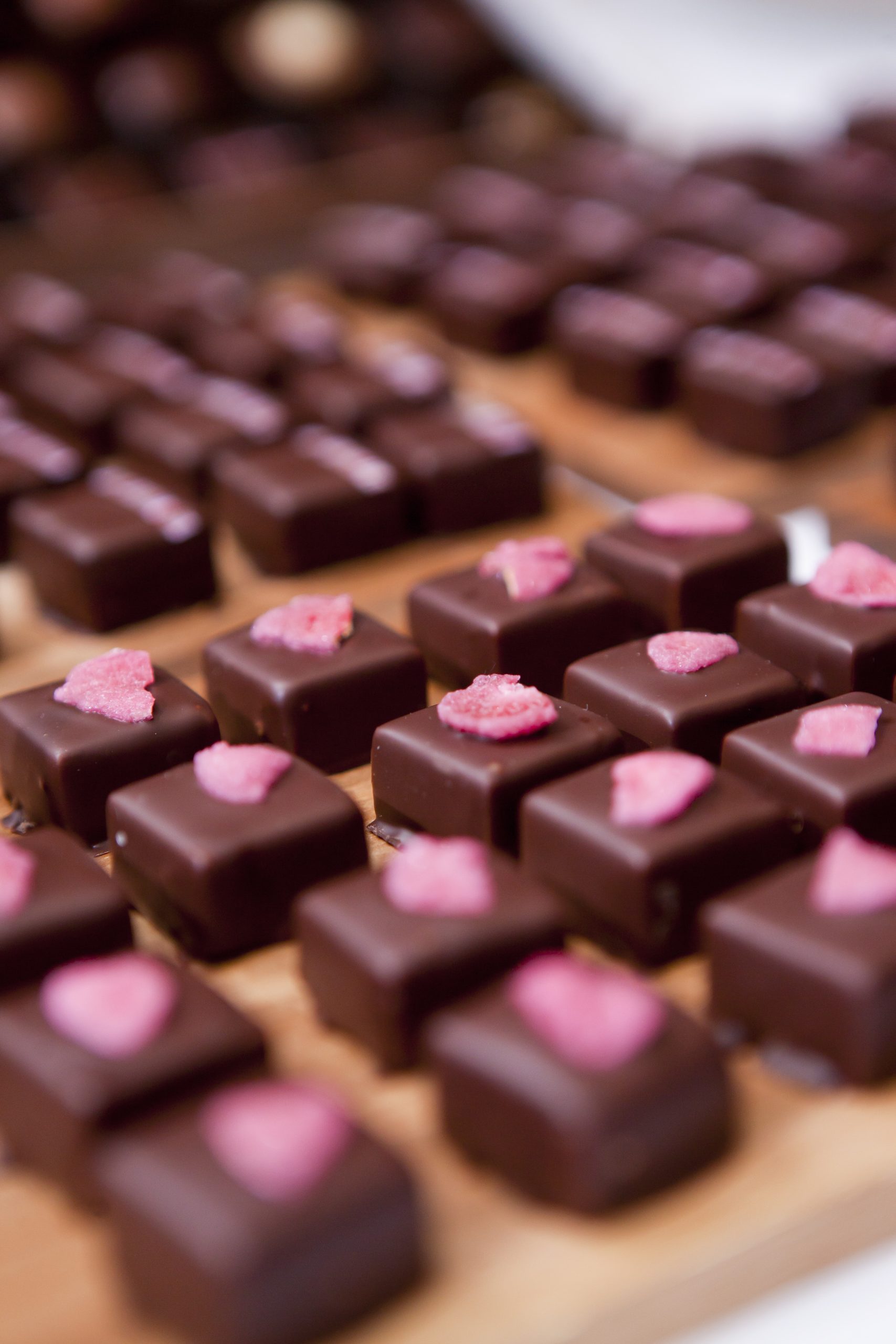
I know that as a chocolate judge and Grand Jury member of The International Chocolate Awards I have the best job in the world – I have lost count of the number of times I have been asked if I need an assistant.
Judging chocolate is not only a professional responsibility, but also a joy and a privilege. But how do you get to this enviable position, judging a rich diversity of world class chocolate, and what does it actually involve?
The one thing all chocolate judges have in common is a deep and abiding love for chocolate. Although it might sound like bliss, focusing on the different nuances across many samples of chocolate in a judging day can be challenging. You have to love your subject. Without that love you won’t put in the hours, or rather years, it can take to build up a really experienced palate that can detect and assess each sample.
Most of us on The International Chocolate Awards Grand Jury have some background in food; as chefs, sommeliers, or in my case a food writer. So we are steeped in the details of taste.
But to make that useful for chocolate the very best training comes via our mother organisation, The International Institute of Chocolate and Cacao Tasting. The IICCT pioneers a flavour led, sensory approach to assessing chocolate. And is busy turning passion and palate into honed professional judging skills, producing a band of judges worldwide that the Awards can rely on. Plus, the courses are great fun, and the perfect place to get started and meet the chocolate community.
There are of course other routes to judging. Many chocolate judges have honed their skills over tasting chocolate as food writers, chefs, cacao producers, chocolate educators and the like.

Whatever route you take to being a judge, what can you expect from a day judging? Will you sit being brought platters of tempting things to eat, which you merely have to pass some kind of judgement over, and put in an order of preference? Well, yes to the former, but a word to the wise, if you actually eat all the samples, you might not stay the course.
Seasoned judges take only as much of the sample as needed to judge fully, and of course you can go back for more if needed, or entirely irresistible. Unlike wine, it is essential that you eat and swallow; so many of the flavour notes in chocolate are not released until the full melt, with a flavour journey developing from when the chocolate is first sniffed through to the aftertaste. All of that adds up to its quality, or not, so you mustn’t miss any of it.
Judging does not involve ranking, the Awards has very sophisticated systems that determine the ultimate scores and allocation of medals, based on many judging rounds and criteria. What the judge has to do is assess the chocolate according to those many criteria, filling out a form using an online system as they do so. The criteria vary, depending, for example, on whether a plain origin bar or a filled bonbon are being judged. They might include a breakdown of flavour notes from the cacao, or balance for added flavours or textures. What all criteria are focused on is the success of the chocolatier or chocolate maker in delivering fine flavour.

There aren’t any really, from where I am sitting. With the correct training you know what you are doing. Live judging sessions are always divided into sections, so a controlled number of samples are judged. Not so many that the palate can’t manage them properly.
The Awards uses unseasoned soupy polenta to cleanse the palate, after trials that show that nothing removes any build-up of sugars, fats or tannins quite like it.
There is also always palate calibration. Which means the regular tasting of one chocolate every ten samples or so. When this palate calibration chocolate is first tasted, detailed notes are made. So that when it is retasted the judge can assess how they experience it at each point through the day, and if their palate is becoming less detailed or effective. If that is the case you stop judging, so you don’t judge when you are not at your full capability.
The responsibilities of judging are paramount. Detailed feedback is given to entrants at all stages of each competition. The judging system itself is designed to assess each product in significant and relevant detail, and never at the whim of a judge’s personal preference. Of course, each sample is judged by many judges and across selection, main and Grand Jury rounds. Inevitably, we all have things we particularly love, or things that we aren’t so keen on.
But when you are assessing by clear set criteria you judge balance, technique, recipe, and it allows you to appreciate things you might not buy yourself and see how they shine in their chosen category. I’ve certainly learned to really like things I hadn’t before, and some things I had never heard of!
The true joy of judging chocolate is discovery. Discovery of a flavour combination, style of truffle, or a cacao origin, that you have never come across before. And possibly even more glorious, the discovery of something you have seen before, a salted caramel, a 70% Madagascar bar, that proves an absolute gem and lifts the genre to a new level. At every competition there are chocolates that sing so sweetly, with such beautifully crafted notes, that you rejoice in the fact that you get to taste it, and to shine a light on such mastery through your work as a judge.
